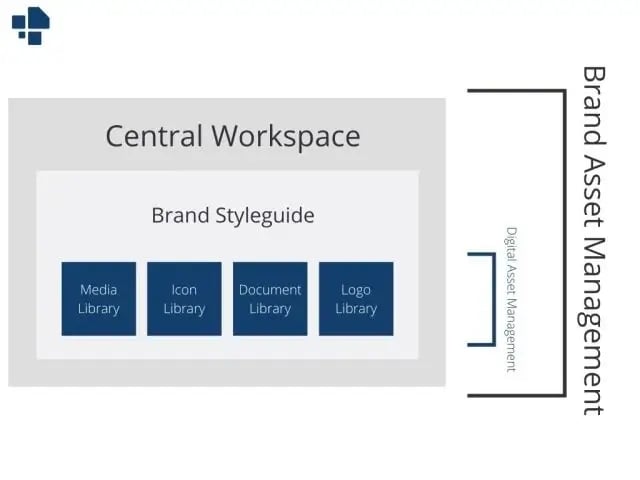Are you looking for an easy-to-understand overview of all aspects of brand management? Then you are at the right place. We will explain what brand management is, what it aims to achieve, and how you can implement it in your business. Our simple explanations and instructions on brand management can help you increase the value of your brand.
What is the goal of brand management?

Brand management deals with various strategies and processes aimed at shaping and permanently influencing the perception of a brand. (Source: das-unternehmerhandbuch.de)
The goal of brand management is to create a relationship or connection between a product or brand and the emotional perception of the customer. It covers the analysis and planning of how your brand is perceived.
Consistent customer satisfaction can increase the perception and value of a brand. Based on your marketing strategy goals, you can create strong brand awareness and increase the price of your products through positive associations and images.
What elements of a brand are part of brand management?
Concrete elements of brand management include the product itself, the appearance, the price, the packaging, etc. Intangible elements, however, play at least as important a role - like the experiences that a consumer has had with the brand.
We cover the following topics:
- Brand identity
- Brand and corporate design
- Brand consistency
- Keep an eye on the competition
- Internationally successful brand management
- Brand Strategy
- Implementing brand management (tools)
- Implementing your brand style guide
- Digital asset management
- Brand asset management
- Increasing the value of your brand
Every brand should have an identity (corporate identity)

The main task of corporate identity is to evoke associations with the brand. It creates a distinct position for the customer compared to competitors and is perceived as better than the competition.
In addition to a product’s quality, the product’s identity is important. The right brand and corporate identity communicate a product’s characteristics to the customer. For example, Nivea cream is always good or a VW is always reliable.
Primarily, a brand promises to deliver consistent quality to the customer. The so-called halo effect defines the subconscious transfer of the positive image of a brand to the product and its characteristics. So, someone who thinks of a Bosch washing machine is more likely to associate quality with the product than someone who thinks of a "no name" washing machine.
A survey conducted by Customer Thermometer polled 1,000 people in the USA. In the survey, 59% said they prefer to buy new products from brands they are familiar with. And sales also benefit as a result. Forbes Magazine confirms that sales increase by 23% on average. This is a clear sign of the importance of corporate branding.
We have gathered 3 steps in order to build a strong brand.
Define the look of your brand (corporate design)

After you have defined an identity, you can turn to the appearance of your brand. Appearance covers everything about how customers see a brand. That includes features like product packaging, logo, fonts, and colors. Telekom, for example, uses the color magenta and the capital "T" and a specific font in all their markets globally.
Consistent and above all constant branding of a company is no easy undertaking. The goal is to create a high brand recognition value. To achieve this, you need a concept that is presented in a kind of manual. In technical jargon, this is called a brand style guide or branding guide.
A brand style guide covers everything that plays a role in the appearance and feel of the brand. That encompasses all the elements that make up the company's identity and set it apart from competitors: fonts, color spectrums, logo orientation, image style, icons, slogans, etc.
Thanks to the brand guidelines, all employees know how they should present the brand internally and externally. The consistent appearance of the brand - whether in blog posts, commercials, PowerPoint presentations, or e-mail signatures, for example - strengthens both brand awareness and corporate identity. Read more about the impact of email signatures in branding in our article on how to create a professional email signature in Outlook.
More detailed information about what a brand guideline should contain and why the appearance of your MS Office documents should not be underestimated. How you can easily, efficiently, and effectively transfer design guidelines to the entire communication concept of your company can be found in our article about Brand guidelines.
Whether the identity or look of your brand, it is very important to make sure that all attributes are kept constant across all communication platforms. In the next section, you will learn more about brand consistency.
Brand consistency can increase sales by 23% on average
 (Source: Benchreport "The Impact of Brand Consistency" by Demand Metric)
(Source: Benchreport "The Impact of Brand Consistency" by Demand Metric)
What happens without brand consistency? Customers will struggle to recognize your brand, and that creates a lack of trust in a supposedly unfamiliar brand. In addition, inconsistency can create confusion internally, especially in teams that create new content (marketing departments, sales departments, and production units). It arises whenever employees use the wrong logos, colors, and images, or use language that does not match the brand identity.
We have created an error checklist for you, and a to-do list on the topic of brand consistency, along with information on how you can tell if you lack Brand Consistency
Stand out from the crowd (competition)

Clear differentiation from the competition is essential. Ever faster globalization leads to a tougher competitive situation in many markets. Often, product superiority alone no longer guarantees success. The speed with which imitations come onto the market has dramatically shortened some product life cycles. So, more and more companies are looking for other, more sustainable competitive tools such as brand management.
International brand management

However, globalization also offers companies the opportunity to expand their target audience internationally. Not only that, but did you know, that international brands and products have a higher perceived quality among customers? So internationalizing your business is well worth it, but it brings a wide variety of brand management challenges with it. Which is better: standardized global branding? Or rather a regionally adapted one? How to handle translations? How can your documents be successfully organized in multiple languages? What are the other advantages for your company?
You can find the answers to these and other questions in our article on internationally successful brand management.
Brand strategy

Brand strategy is about solidifying your brand identity and communicating it consistently across all channels. But how do we define "brand strategy"? What are common brand strategies? And how can a brand strategy be developed? You can find the answers to these questions in our blog post "Brand strategy: definition, types, and development".
To give you some initial food for thought, here are some questions you must include in your brand strategy.
- Do you really know who you are as a company - does your brand have a story?
- What are your company values?
- Who exactly is your target group? (Age, values, shopping behavior, ethical standpoints, ecological standpoints, hobbies, preferences, needs, social media affinity…)
- Have you defined one or more example personas and what benefits the brand delivers to them?
- What exactly sets you apart from the competition? (USP)
- Where do you get the inspiration for your corporate design - what design concept do you want to pursue?
How to implement brand management as efficiently as possible! (Tools)

As a first step, identify the core value of a brand and how to reflect it to target customers. In the course of brand management, the credibility of the brand should be built up; only credible brands create brand loyalty. Among other things, credibility develops through consistency in brand communication, as described above.
This is exactly where brand management tools come into play. These software solutions ensure that a uniform appearance of your brand is communicated strategically, efficiently, and in an interconnected manner. All your documents, presentations, etc. can be stored in company-wide libraries and edited by the team. Well-thought-out brand management software facilitates workflows considerably - not only in the brand and corporate communication but company-wide.
Implement brand style guide successfully
A brand style guide is the single source of truth when it comes to the application of brand guidelines. But how can you verify that the brand style guide is being followed in the creation of every document?
The short answer: you can't.
It's impossible to check every single document for one hundred percent accuracy. However, successes and improvements in the application can be specifically achieved with training and coaching.
- Appoint corporate design officers who are responsible for brand compliance. Their task is to be available as contact persons and to keep the brand style guide up to date.
- Involve users actively and arouse their interest in the brand guidelines.
- Conduct training sessions on brand compliance.
- And last but not least, make your brand style guide easily accessible to all employees.
If these steps are too complicated for you, read more about empower®s Brand Control solution!
Digital asset management

Centralized storage, organization, and sharing of media elements such as logos and other creative files should not be neglected in brand management. The scope of digital asset management is vast. Often, managers feel overwhelmed by the high demand for files, digital images, and video assets. An asset is only valuable if everyone on the team can find the files they need, and searching for files takes a lot of energy. In addition, it is very important to many modern companies to maintain global brand consistency and to always use all files in the correct corporate design.
Here are the 8 most important functions of digital asset management:
- Portal for media files (assets) such as images, graphics, or text elements.
- Access for employees/different departments to the same brand files (save and retrieve).
- Access to external suppliers or service providers for easy exchange of data during production processes.
- Updating files in a central database.
- Centralized storage of assets in a single location.
- Search function to find documents more easily (stored assets include metadata).
- Security enforced by customizable user roles and permissions.
- Organization of important assets e.g. through a folder function (albums, collection, collection).
In addition to the above, there is much more you should know about digital asset management in our article "What you should know about Digital Asset Management (DAM)".
Brand asset management
Brand Asset Management is superordinate to Digital Brand Management. It is a platform that, in addition to a library for media content, icons, logos and documents, contains two other important functions: firstly, the style guide and, secondly, the workspace for cross-team collaboration. The Workspace is a central work environment that connects a company's brand style guide with its asset libraries (DAM) and makes them accessible to internal and external employees.
 3 benefits of brand asset management:
3 benefits of brand asset management:
- By linking brand guidelines in a style guide with brand assets, implementing your brand is easy.
- With everything in one place, managing your brand is simplified.
- Internal and external employees/freelancers receive all necessary brand-related content.
You can find further benefits and information on this topic in our article
"What is Brand Asset Management?"
How to increase the value of your brand
Through proper brand management, customers have a solid, positive image of your brand in mind. This value perception combines with material values like sales, turnover, cost structure, etc. to build market value. We would like to help you to strengthen your corporate and brand image. Our guide will certainly help you to get an overview of all core areas of brand management. Additionally, you can have a look at our checklist of 20 questions on brand management.
Do you want to take the first step towards uniform corporate design in MS Office? With empower® Suite we help people worldwide to create professional and brand-compliant presentations, documents, and emails more easily and efficiently. empower® has already helped companies such as Merck or Bayer to achieve more uniformity and efficiency in the creation of meaningful office documents.
We also offer a simple brand management solution that enables everyone to create design-compliant Office documents. Get started now! Please feel free to get in touch so we can present empower® to you in an online demo or provide a test version.
You May Also Like
Related articles

Brand management: 20 questions to help you manage your success

Internationally successful brand management



